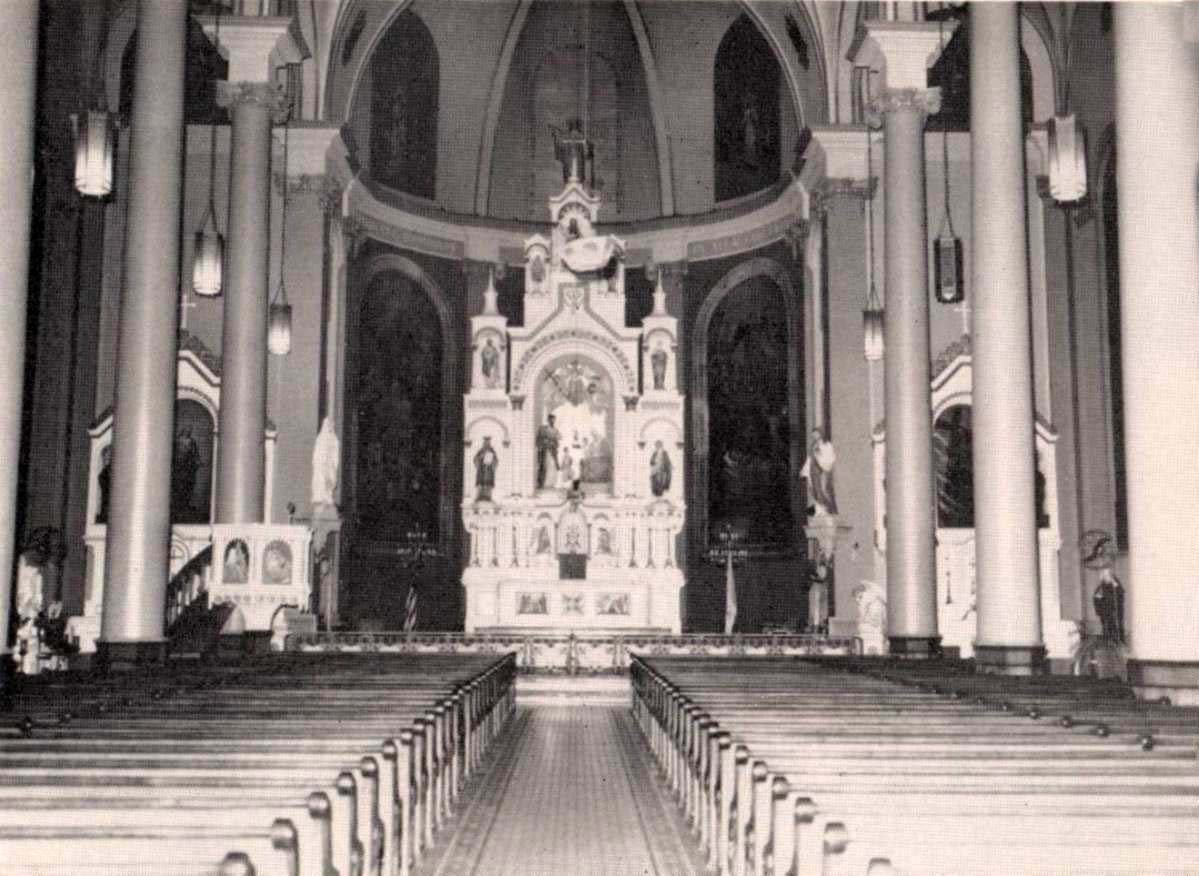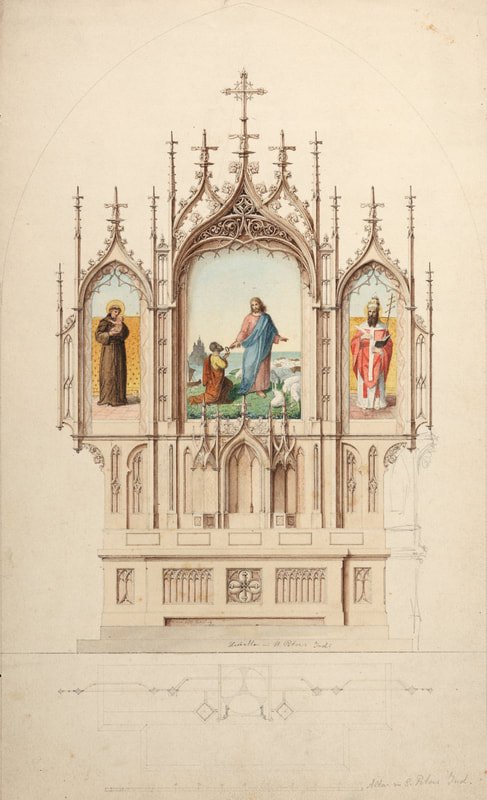
When they live by the work of their hands, then they are truly monks.”
The Rule 48:8
Br. Cosmas Wolf, O.S.B., is regarded as one of the most significant 19th century church artists working in the United States.
Bavarian-born Johann Cosmas came to America to pursue monastic life at Saint Vincent as a laybrother in 1853, taking the name Cosmas. Recognizing his artistic aptitude, Archabbot Boniface Wimmer sent Cosmas to study at the Royal Academy of Art in Munich under the sculptor Johann Nepomuk Petz (1818–1880). Heavily influenced by the Neo-Gothic and Nazarene stylings for which his teacher Petz was widely noted, Br. Cosmas’ rigorous apprenticeship prepared him for analogous work upon his return to America.
Photo: Br. Cosmas Wolf, OS.B. Archives of Saint Vincent Archabbey

Drawing for a Carved Wood Panel, Br. Cosmas Wolf, O.S.B. Graphite with wash, 1857. Saint Vincent Archabbey Collection. Photo by Richard Stoner.
In 1862, a small studio at St. Joseph Church in Covington became a workshop for the best liturgical artists and artisans of America’s 19th century.
Br. Cosmas established The Catholic Altar Building Stock Company — a workshop of craftsmen specializing in ecclesiastical decoration — also known as the Institute for Catholic Art.
Located at St. Joseph Church, in Covington, KY, the workshop adorned churches largely in service of the growing number of German immigrants throughout the geographic area between Cincinnati, Milwaukee, and St. Louis, commonly referred to as the “German Triangle.”
Br. Cosmas assembled an impressive team of artists and designers whose collective creative output included work in ten states and dozens of churches. The young Frank Duveneck, who served as an altar boy at St. Joseph Church, soon discovered benedictine Br. Cosmas and his Altar Stock Building Co. It would be here that Duveneck apprenticed and discovered his vocation as a painter.
Photos below: St. Joseph Church, Covington, where Br. Cosmas’ studio was located, was razed in the 1980s. One archival photo captures damage to the bell tower from a Tornado on July 7, 1915.



Equipped with workspaces for painting, woodworking, and stained-glass, under Br. Cosmas’ direction, the Company created altars, baptismal fonts, statues, candlesticks, reredoses, pulpits, communion rails, Stations of the Cross, frames for easel paintings, stained-glass windows, crucifixes, croziers, and architectural ornaments, among other liturgical appointments.
The studio worked primarily in a German Gothic Revival style, resulting in designs that featured pointed archways, highly composed vignettes of figures, steep gables, and delicate ornament. For many, a revival of these late-medieval conventions symbolized abiding tradition, permanence, spiritual lineage, and a reverence for craftsmanship over the advancements of industry. As a result, communities commissioning work from the Catholic Altar Building Stock Company were importing an aesthetic that expressed a collective spiritual identity linked to a foreign home.
By 1868, Br. Cosmas had returned to Saint Vincent; continuing to create work for a variety of monasteries, convents, and parishes primarily sponsored by Benedictines until his death.
Photos by Richard Stoner L-R:
High Altar in St. Peter’s Ind. [Brookville, Indiana], Cosmas Wolf, O.S.B., Ink with wash and graphite, 1864–65. Saint Vincent Archabbey Collection.
Drawing for an Altar Set with Crucifix and Two Candlesticks, Br. Cosmas Wolf, O.S.B., ink with graphite on paper, ca. 1862 - 1868. Saint Vincent Archabbey Collection.
High Altar in Holzhausen, Bavaria, Br. Cosmas Wolf, O.S.B., ink with wash and graphite, ca. 1857–1862. Saint Vincent Archabbey Collection.




